Gulfstream planes are a line of business jets known for performance and luxury. These aircraft serve the business aviation market with advanced technology and superior comfort. Gulfstream planes exhibit attributes like range, speed, cabin size, and fuel efficiency. Each model reflects engineering precision and meets rigorous safety standards. Explore available options to buy a Gulfstream plane that aligns with specific operational requirements.
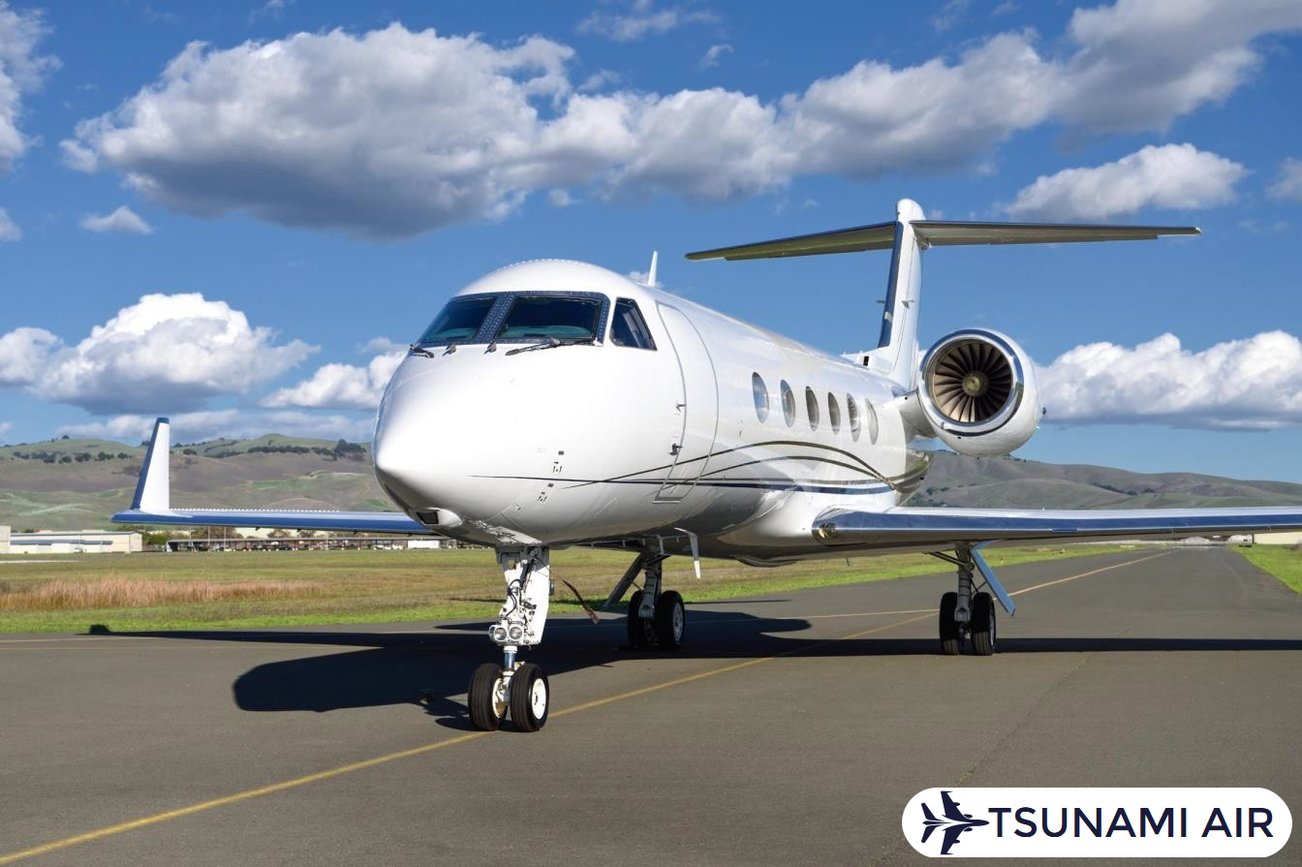
USD $N/A
JetReg Number
N455MB
Total Time
10538 hrs
Location
United States
Year
2004
Seller: AIRCRAFT SALES
Phone: +1 (514) 636-1099
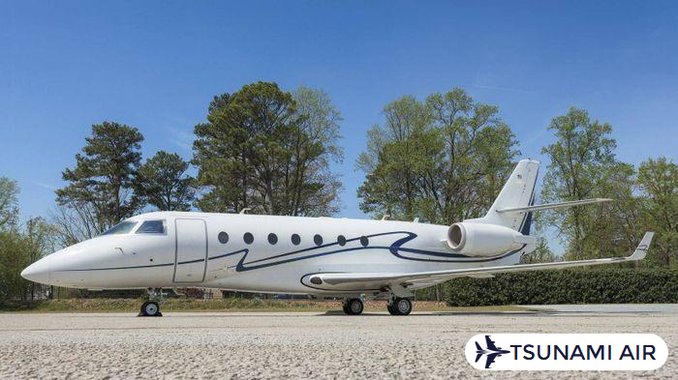
USD $Call for Price
JetReg Number
Not Listed
Total Time
2251 hrs
Location
United States
Year
2012
Seller: N/A
Phone: (770) 955-3554
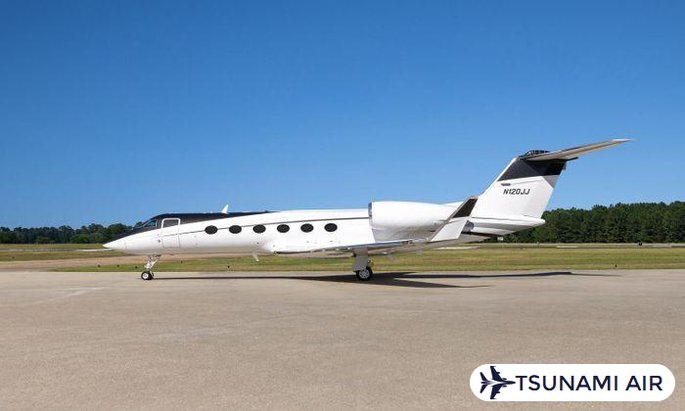
USD $3,500,000
JetReg Number
N120JJ
Total Time
13923 hrs
Location
United States
Year
1995
Seller: International Aircraft Marketing & Sales - James Perkins
Phone: (941) 355-5353 - office
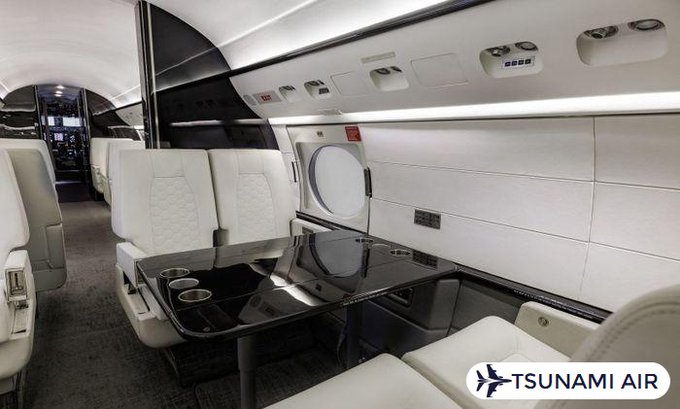
USD $N/A
JetReg Number
N960DP
Total Time
11534 hrs
Location
United States
Year
1991
Seller: International Aircraft Marketing & Sales - James Perkins
Phone: (941) 355-5353 - office
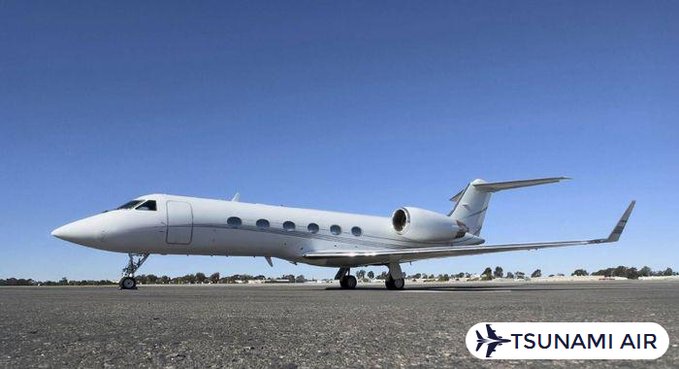
USD $Call for Price
JetReg Number
N607SB
Total Time
13947 hrs
Location
United States
Year
1997
Seller: N/A
Phone: (770) 955-3554

USD $N/A
JetReg Number
N583AJ
Total Time
13268 hrs
Location
United States
Year
1992
Seller: International Aircraft Marketing & Sales - James Perkins
Phone: (941) 355-5353 - office
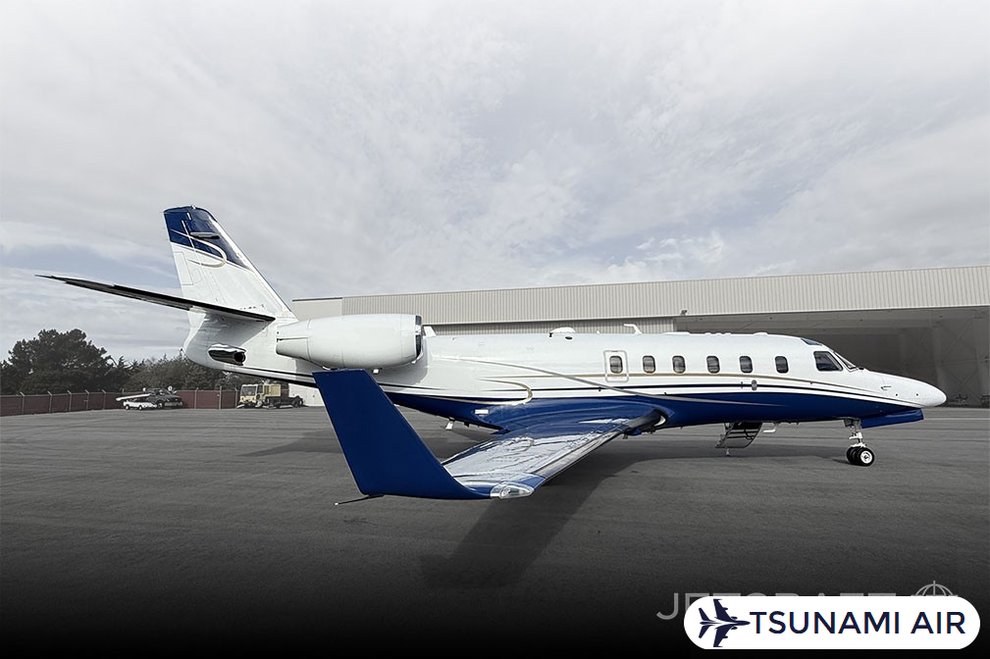
USD $N/A
JetReg Number
-
Total Time
6,876 hrs
Location
United States
Year
2001
Seller: Sales Team
Phone: +1 (919) 941 8400
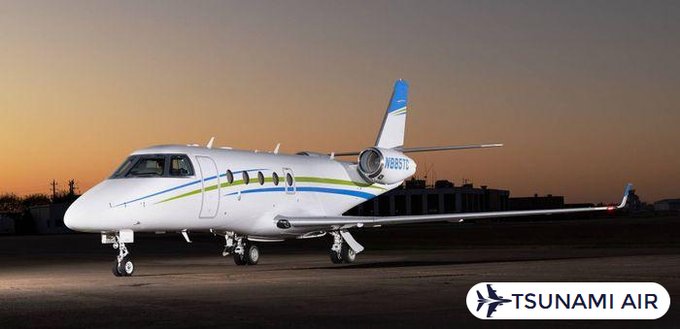
USD $Call for Price
JetReg Number
N885TC
Total Time
4800 hrs
Location
Canada
Year
2009
Seller: N/A
Phone: (403) 291-9027
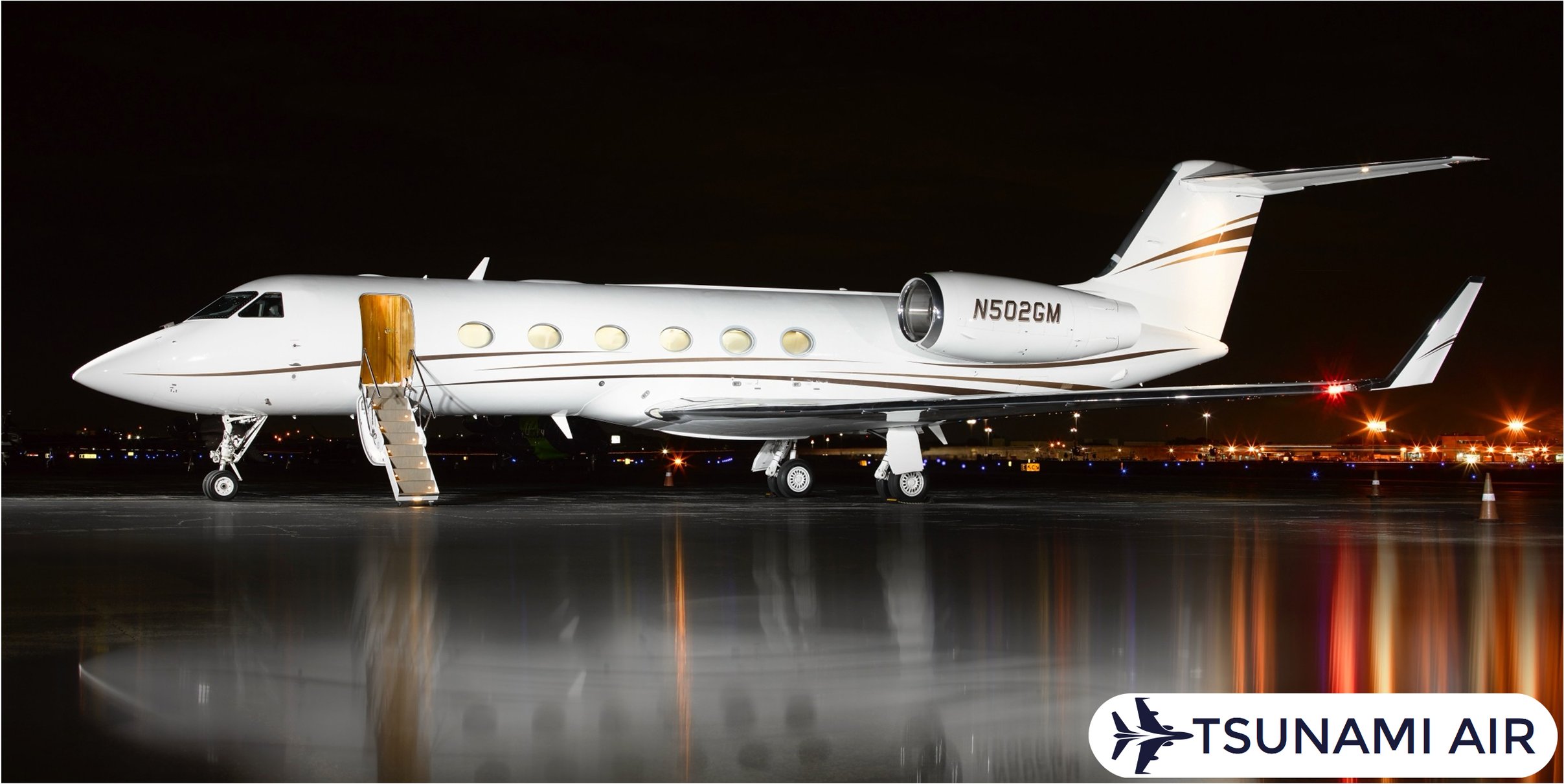
USD $N/A
JetReg Number
N502GM
Total Time
5,500 hrs
Location
United States
Year
2005
Seller: Rick Carvalho
Phone: +1 (954) 377 0303
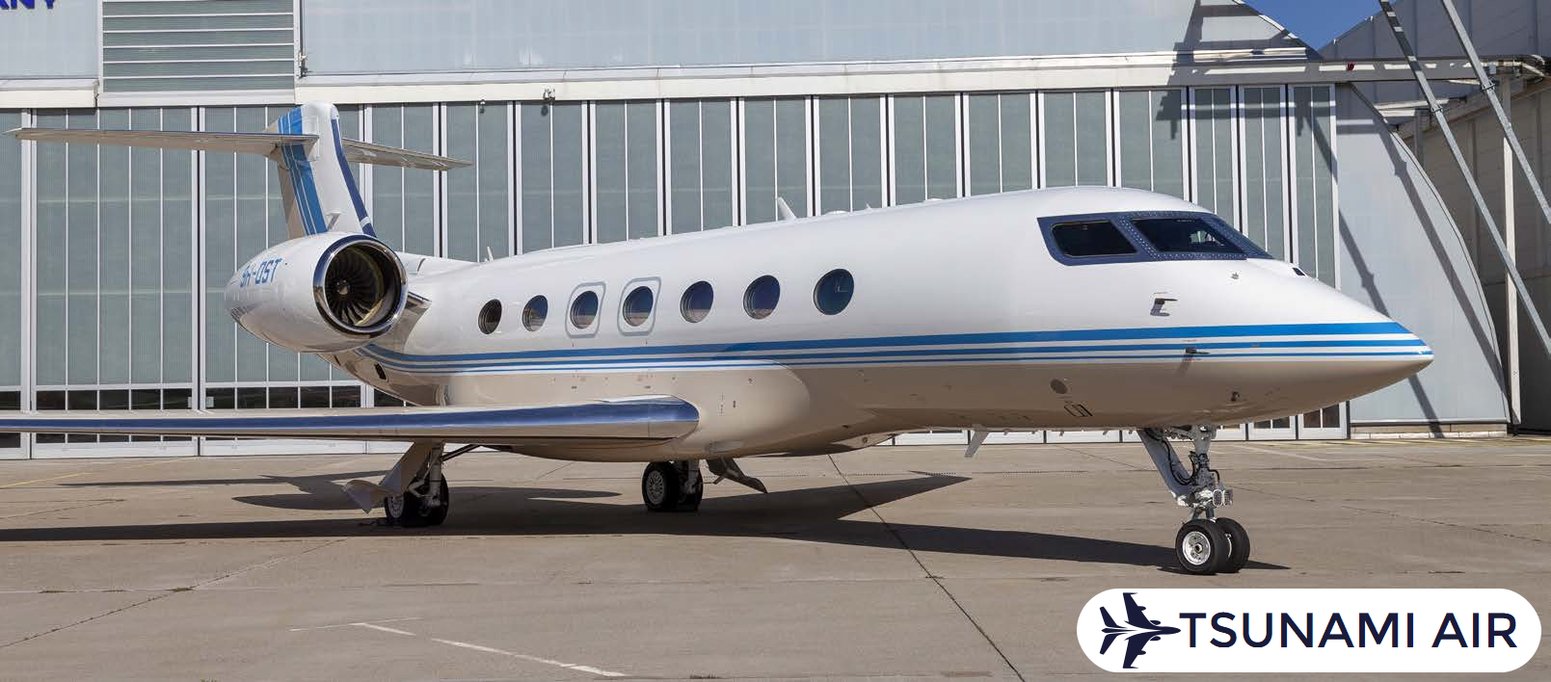
USD $N/A
JetReg Number
9H-OST
Total Time
457 hrs
Location
Monaco
Year
2020
Seller: Dominique Trinquet
Phone: +377 93 30 80 02

USD $N/A
JetReg Number
N789LR
Total Time
6227 hrs
Location
United States
Year
2006
Seller: Bob Rabbitt
Phone: +1 (410) 573 1515
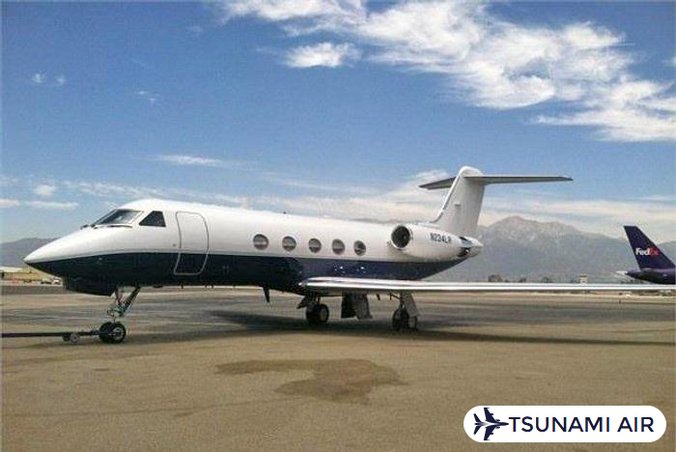
USD $Call for Price
JetReg Number
N234LR
Total Time
13580 hrs
Location
Malaysia
Year
1980
Seller: N/A
Phone: (209) 983-0117

USD $9,995,000
JetReg Number
N780W
Total Time
10,594 hrs
Location
Caribbean, Bahamas
Year
1998
Seller: Eddie Kilkeary
Phone: +1 (410) 573 1515
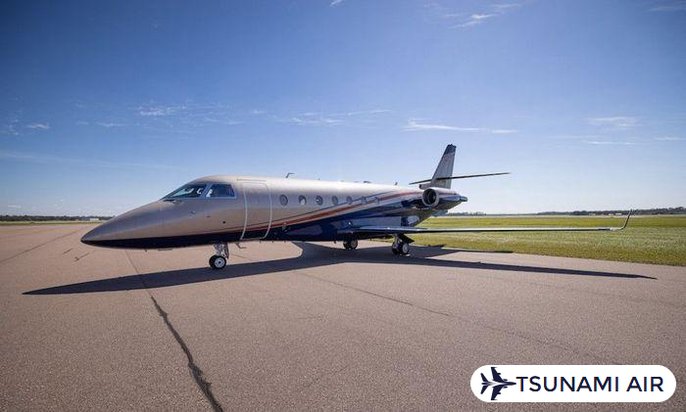
USD $Call for Price
JetReg Number
N283DJ
Total Time
6825 hrs
Location
United States
Year
2002
Seller: Lone Mountain Aircraft Sales - Spencer Bain
Phone: (630) 414-1293
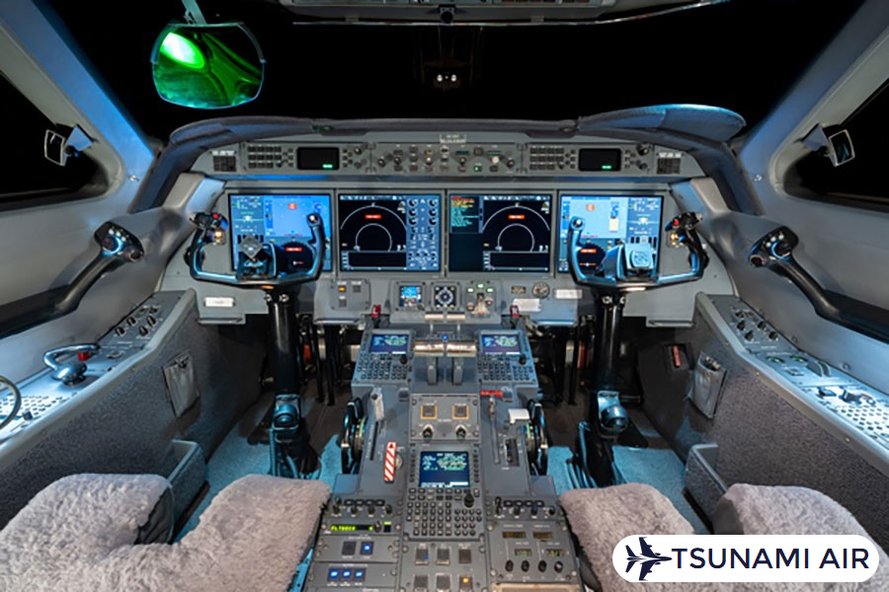
USD $10,995,000
JetReg Number
N818BK
Total Time
5959 hrs
Location
United States
Year
2006
Seller: Eddie Kilkeary
Phone: +1 (410) 573 1515
The Gulfstream aircraft brand is a global leader in business aviation. Gulfstream Aerospace Corporation designs, develops, manufactures, markets, and services high-performance business jets worldwide. Operating since 1958, Gulfstream has produced over 2,000 aircraft for corporations, governments, and individuals globally.
Gulfstream Aerospace Corporation operates as a wholly-owned subsidiary of General Dynamics, the parent company that has aided its growth and innovation. Gulfstream Aerospace designs, develops, and manufactures business jet aircraft types customized to meet diverse needs in the aviation industry. Gulfstream Aerospace ensures high performance and long-range capabilities in its aircraft while maintaining a reputation for advanced technology integration. The Gulfstream manufacturer produces large-cabin, long-range business jets, enabling intercontinental travel for corporate, government, and private clients globally.
The Gulfstream aircraft brand targets the business jet market segment, serving corporations, governments, and private individuals with customized solutions. Gulfstream planes cater to corporate travel needs with customized configurations, provide secure options for government missions, and deliver bespoke experiences for private aviation. Gulfstream Aerospace Corporation has delivered over 2,000 airplanes since 1958, solidifying its position as a global leader in business aviation. Popular models include the G650, G700, and G800, which are renowned for their efficiency and luxury.
Gulfstream Aerospace Corporation specializes in manufacturing business jet aircraft types equipped with cutting-edge technology and luxurious interiors. Gulfstream designs emphasize low cabin altitudes and abundant natural light, boosting passenger comfort during long flights. Gulfstream Aerospace operates major manufacturing facilities in Savannah, Georgia, and maintains additional locations across the United States for advancement and servicing. The Gulfstream aviation brand influences trends in the business jet market segment by continuously innovating and introducing new aircraft models like the G400 and G500/G600 series.
Gulfstream Aerospace Corporation contributes to the global aviation industry through its commitment to innovation and service excellence. Gulfstream jets integrate advanced systems like the Symmetry Flight Deck, refining pilot efficiency and safety. Gulfstream planes achieve ultra-long-range capabilities, with the G800 covering 8,200 nautical miles at Mach 0.85. Gulfstream Aerospace remains competitive by addressing evolving client demands and delivering exceptional value in the business jet market segment.
The types of planes Gulfstream manufactures include business jets like the G280, G450, G550, G500, G650, G700, and G800. Gulfstream jets are designed for private jet travel with the range of private jets varying from 2,500 nm to over 7,750 nm.
The types of planes that Gulfstream manufactures are listed below.
Gulfstream Aerospace segments its business jets into categories defined by luxury, performance, and size. The G650 and G550 stand out as flagship models in the ultra-long-range and long-range segments. The Gulfstream G650 range extends up to 7,500 nautical miles, with a speed exceeding Mach 0.90, making it a leader in the business jets segment. The Gulfstream G650 cabin offers unmatched luxury, featuring en-suite lavatories and advanced amenities for passenger comfort. The Gulfstream G550 range reaches 6,750 nautical miles, guaranteeing reliability for transcontinental travel. Gulfstream G550 reliability has earned it a reputation as one of the most trusted airplanes in the business jets luxury category.
The advanced mid-size and super-midsize jets include the G500, G600, and G280. Gulfstream G500 technology incorporates the Symmetry Flight Deck with active control sidesticks and Honeywell Primus Epic avionics. The Gulfstream G500 efficiency is achieved through fuel-efficient engines and aerodynamic design elements, allowing a range of 5,300 nautical miles at Mach 0.85. The Gulfstream G600 avionics enhance operational efficiency, while its cabin accommodates up to 19 passengers with 14 panoramic oval windows. The Gulfstream G600 comfort is further amplified by low cabin altitude and fresh air circulation systems. The Gulfstream G280 size bridges the gap between midsize and large-cabin jets, offering a range of 3,600 nautical miles. Gulfstream G280 agility ensures adaptability to diverse flight conditions.
The G700 represents next-generation excellence in the business aircraft lineup. Gulfstream G700 range extends to 7,500 nautical miles, positioning it as a leader in ultra-long-range capabilities. Gulfstream G700 luxury includes state-of-the-art kitchen amenities and en-suite lavatories, boosting passenger experience. Gulfstream G700 technology integrates twin engines and sophisticated cabin systems for optimal performance. Gulfstream Aerospace continues to innovate, producing an advanced fleet customized to meet evolving needs in the business jets segment.
Gulfstream planes are used for business aviation, government missions, hurricane forecasting, medical evacuation, and atmospheric research. Gulfstream aircraft perform surveillance, reconnaissance, intelligence gathering, and deliver innovative solutions in various sectors including commerce and humanitarian efforts.
Corporate executives and business professionals rely on Gulfstream planes for efficient travel, enabling seamless transportation during corporate travel business trips. Government and military organizations utilize these aircraft for secure missions, including surveillance, reconnaissance, and intelligence gathering. Private owners and luxury travelers choose Gulfstream planes for comfort and exclusivity, assuring private jets personal travel meets the highest standards. Business jets corporate travel supports executive aviation corporate mobility, while private jets luxury travel caters to high-end leisure demands.
Gulfstream planes facilitate seamless business travel and executive transport, boosting productivity for corporate travel executive meetings. Governments operate 200 Gulfstream jets across 35 nations, with the G550 model serving as a primary choice for transporting heads of state and conducting airborne early warning missions. Medical evacuation and atmospheric research missions further demonstrate the versatility of these aircraft. Specialized configurations support hurricane forecasting, sea level monitoring, and scientific data sampling, showcasing Gulfstream aerospace innovator capabilities.
Long-range models like the G650 and G800 are designed for intercontinental flights, offering ranges exceeding 7,000 nautical miles. Short to medium-range variants cater to regional travel needs, providing flexibility for diverse operational contexts. Gulfstream aerospace manufacturer tailors aircraft for niche purposes, including cargo transport and intelligence missions. Customization options guarantee technical specifications align with mission requirements, emphasizing Gulfstream planes executive aviation excellence.
Operational roles vary based on speed, range, and capacity demands, with Gulfstream planes maintaining top speeds of Mach 0.935. Models configured for government use reduce cockpit switches by up to 70%, refining efficiency. Cost considerations and maintenance demands differ across models, reflecting Gulfstream aerospace focus on versatility. Gulfstream planes business travel minimizes downtime, aiding long-distance travel efficiency for both business and personal applications.
Gulfstream aircraft models include the G280, G400, G500, G600, G700, and G800. G280 is a super mid-size jet with a range of 3,600 nautical miles. G500 offers a range of 5,300 nautical miles. G700 provides a range of up to 7,750 nautical miles. G800 is capable of flying up to 8,200 nautical miles.
The Gulfstream aircraft models are given in the table below.
Aircraft Model | Category | Range (Nautical Miles) | Maximum Cruise Speed (Mach) | Key Features |
G280 | Super Mid-Size | 3,600 | 0.85 | Two Honeywell HTF7250G engines |
G400 | Mid-Size | 4,200 | 0.85 | Twin Pratt & Whitney engines |
G500 | Large Cabin | 5,300 | 0.90 | Symmetry Flight Deck; up to 13 passengers |
G600 | Large Cabin | 6,600 | 0.90 | Symmetry Flight Deck; up to four living areas |
G700 | Ultra-Long-Range | 7,750 | 0.90 | Twin Rolls-Royce Pearl 700 engines; 20 windows |
G800 | Ultra-Long-Range | 8,200 | 0.90 | Rolls-Royce Pearl 700 engines |
G100 | Legacy | N/A | N/A | Legacy model |
G150 | Legacy | N/A | N/A | Legacy model |
G200 | Legacy | N/A | N/A | Legacy model |
G300 | Legacy | N/A | N/A | Legacy model |
G450 | Legacy | 4,350 | N/A | Mid-size business jet |
G550 | Legacy | 6,750 | N/A | Up to 16 passengers |
G650 | Legacy | 7,000 | 0.90 | High-end luxury and speed |
G650ER | Legacy | 7,500 | 0.90 | Extended range version of G650 |
Legacy Gulfstream models include the G100, G150, G200, G300, G450, G550, G650, and G650ER. The G650 and G650ER are high-end models known for their speed and comfort. These legacy models established Gulfstream’s reputation for performance and luxury in business aviation. The G500, G600, G700 and G800 models feature the Gulfstream Symmetry Flight Deck, boosting pilot efficiency and safety.
The G800 aircraft model offers a maximum range exceeding 8,000 nautical miles, powered by Rolls-Royce Pearl 700 engines. Both the G700 and G800 incorporate the Gulfstream Symmetry Flight Deck, ensuring cutting-edge technology and operational efficiency.
Key differences between the Gulfstream G650, G700, and G800 include range, cabin size, and features. G800 offers the longest range at 8,000 nautical miles, while G700 provides a larger cabin. G650 is priced lower with a 7,000-nautical-mile range. G800 is the first to achieve extensive range capabilities and includes advanced cockpit systems.
The key differences between the Gulfstream G650, G700, and G800 are given in the table below.
Feature | Gulfstream G650 | Gulfstream G700 | Gulfstream G800 |
Cabin Length | 46 ft 10 in | 56 ft 11 in | 46 ft 10 in |
Range Capability | 7,000 nmi | 7,500 nmi | 8,000 nmi |
Cruise Speed | Mach 0.925 | Mach 0.935 | Mach 0.925 |
Cabin Volume | Standard | Largest | Standard |
Cabin Height | 6 ft 3 in | 6 ft 3 in | 6 ft 3 in |
Cabin Width | 8 ft 2 in | 8 ft 2 in | 8 ft 2 in |
Window Count | N/A | More | Fewer |
Engine Type | Rolls-Royce BR725 | Rolls-Royce Pearl 700 | Rolls-Royce Pearl 700 |
First Flight | 2009 | 2020 | June 2022 |
FAA Certification | Certified | Certified | Expected 2025 |
Max Passengers | Up to 19 | Up to 19 | Up to 19 |
Key Focus | Balanced | Cabin Size | Maximum Range |
The Gulfstream G650 achieves a range of 7,000 nautical miles (12,964 kilometers) and cruises at speeds up to Mach 0.925, 982.7 km/h (610.6 mph) or 610.6 mph (982.7 kilometers per hour). The cabin dimensions include a height of 6 feet 3 inches (1.905 meters) and a width of 8 feet 2 inches (2.4892 meters), providing ample space for passengers. Advanced avionics in the G650 enhance pilot efficiency, making it a cost-effective choice for buyers seeking balance between performance and luxury.
The Gulfstream G700 offers a range of 7,500 nautical miles, surpassing the G650's capabilities. The G700 incorporates new wing designs and Rolls-Royce Pearl 700 engines, achieving higher fuel efficiency while maintaining cruise speeds up to Mach 0.935. Its cabin volume exceeds the G650's, with a length of 56 feet 11 inches (17.35 meters) accommodating up to 19 passengers. Design innovations in the G700 emphasize spaciousness and comfort, solidifying its position as Gulfstream's flagship model.
The Gulfstream G800 delivers an extended range of 8,000 nautical miles, making it the longest-range business jet in Gulfstream's fleet. Cruise speeds reach Mach 0.925, allowing efficient long-range flights. Rolls-Royce Pearl 700 engines enhance fuel efficiency, contributing to environmental benefits. Advanced materials and state-of-the-art avionics, including active control side sticks and predictive landing systems, highlight Gulfstream aerospace engineering advancements.
Range capabilities differ across models, with the G650 offering 7,000 nautical miles, the G700 extending to 7,500 nautical miles, and the G800 reaching 8,000 nautical miles. Cabin sizes vary, as the G700 provides the largest volume with a length of 56 feet 11 inches (17.35 meters), while the G800 sacrifices some space for increased range using the same fuselage as the G650. Each model targets specific priorities, balancing cost, comfort, and performance to meet diverse buyer needs.
The specifications of Gulfstream aircraft include the G650 and G700 models, both featuring advanced engines with thrust measured in lb kg. Gulfstream aircraft achieve a maximum operating speed of Mach 0.925, with the G700 offering a longer range and higher fuel efficiency than the G650. Cabin length and payload capacity depend on configuration.
The specifications of Gulfstream aircraft are given in the table below.
Model | Range (NM) | Max Speed (Mach) | Passenger Capacity | Cabin Volume | Engine Type | Wingspan (ft/m) | Takeoff Distance (ft/m) |
Gulfstream G450 | 3,000 | 0.85 | Up to 8 | N/A | Rolls-Royce Tay 611-8 | N/A | N/A |
Gulfstream IV | 4,220 | 0.88 | Up to 19 | N/A | Rolls-Royce Tay 611-8 | N/A | N/A |
Gulfstream V | 6,500 | 0.88 | Up to 19 | N/A | Rolls-Royce BR710 | N/A | N/A |
Gulfstream G280 | 3,600 | 0.85 | Up to 10 | N/A | Honeywell HTF7250G | N/A | N/A |
Gulfstream G500 | 5,300 | 0.925 | Up to 19 | N/A | Pratt & Whitney PW814GA | N/A | N/A |
Gulfstream G550 | 6,750 | 0.885 | Up to 19 | 1,669 cu ft | Rolls-Royce BR710 | N/A | N/A |
Gulfstream G650 | 7,000 | 0.925 | Up to 19 | Large | Rolls-Royce BR725 | N/A | N/A |
Gulfstream G700 | 7,500 (13,890) | 0.925 | Up to 19 | N/A | Rolls-Royce Pearl 700 | N/A | N/A |
The Gulfstream G450 integrates the Symmetry Flight Deck, refining pilot ergonomics and reducing workload through intuitive interfaces. Aerodynamic fuselage clean wing design contributes to actual fuel efficiency, which varies based on speed, stage length, and other operational considerations. The Gulfstream IV range extends to 4,220 nautical miles, with a max speed of Mach 0.88 and a passenger capacity of up to 19. Two Rolls-Royce Tay 611-8 engines guarantee reliability, while cabin dimensions accommodate various configurations.
The Gulfstream G500 cabin width measures 7.9 feet (2.41 meters). The Gulfstream G550 delivers a cabin volume of 1,669 cubic feet.
The Gulfstream G700 features a cabin length of up to 56.9 feet (17.34 meters). Advanced avionics integrate into the design, powered by two Rolls-Royce Pearl 700 engines. The G700’s longer range and higher fuel efficiency distinguish it from the G650, alongside extended cabin length and boosted avionics. Seat configurations accommodate up to 19 passengers across all flagship models. Gulfstream symmetry flight deck technology enhances safety and operational precision.
Gulfstream jets' cost-effectiveness for long-distance international travel depends on factors like operating costs, fuel efficiency, and luxury amenities. Gulfstream jets offer ranges exceeding 7,000 nautical miles, enabling nonstop flights between distant global cities. Operating costs range from $8,000 to $12,000 per flight hour, with newer models incurring higher expenses. Advanced aerodynamics and fuel-efficient engines reduce consumption, refining cost-effectiveness for frequent travelers. Time savings, direct routing, and luxurious amenities justify the high costs for business aviation users. Chartering options provide access to these capabilities without the financial commitment of full ownership.
Cost-effectiveness encompasses purchase price, operational costs, fuel efficiency, maintenance demands, and resale value market value retention. Evaluating cost-effectiveness involves measuring value over time rather than comparing against alternatives like commercial flights or other private jets. Private owners, corporations, and charter operators assess affordability based on financial capacity and operational needs. Long-distance international travel range capability defines the utility of Gulfstream jets, with models like the G650 offering a range of 7,000 nautical miles and the G550 covering up to 7,760 nautical miles without refueling. These ranges enable non-stop flights between major global cities, allowing long-distance international travel and global connectivity.
Key features impacting cost-effectiveness include fuel consumption rates, extended range capabilities, and maintenance costs. Fuel consumption rate directly influences operating costs fuel expenditure, which ranges from $8,000 to $12,000 per flight hour. Maintenance expenses are optimized through predictive maintenance technologies, guaranteeing consistent performance and reliability. Gulfstream jets reliability ensures fewer scheduled maintenance visits, lowering overall expenses. Depreciation rates contribute to favorable resale value profiles, with low depreciation rates aiding strong return on investment when selling or upgrading.
Long-distance international travel involves specific ranges exceeding 6,750 nautical miles or durations requiring non-stop capabilities. Gulfstream jets operational efficiency is achieved through advanced aerodynamics and fuel-efficient engines, reducing fuel consumption and boosting cost-effectiveness total cost of ownership. Business aviation executive travel benefits from time savings, direct routing, and luxurious amenities, which justify high operating costs and crew expenses. Market comparisons and competitive pricing highlight Gulfstream’s advantage in aircraft range, maximum distance, and technological innovation. Business aviation corporate utility is refined by Gulfstream jets luxury, evident in state-of-the-art interiors and advanced connectivity features.
Gulfstream jets can handle extreme weather conditions including thunderstorms, hurricanes, and severe turbulence due to advanced technology, pilot training, and structural integrity certifications for challenging environments.
Gulfstream models vary in their capabilities to handle extreme weather conditions due to differences in design, technology, and performance specifications. The Gulfstream G450 and G250 demonstrate amplified resilience through advanced de-icing protocols and structural integrity durability. These private jets incorporate heated bleed air systems to prevent ice formation on vital surfaces, guaranteeing flight safety reliability. Structural integrity strength is a hallmark of Gulfstream aerospace engineering, with rigorous weather testing protocols and procedures validating performance under severe environmental conditions. While all Gulfstream jets adhere to stringent aircraft certification standards, specific models excel in adverse weather due to special features boosting gulfstream jets durability.
Handling extreme weather involves maintaining structural integrity, operational performance, and utilizing advanced onboard systems. Structural resilience ensures the airframe withstands turbulence, lightning strikes, and hail impacts during flight. Operational performance includes maintaining altitude and speed despite crosswinds up to 10 knots with a 5-knot crosswind component during testing. Advanced navigation systems aid pilots in avoiding severe weather zones, complementing pilot training programs focused on adverse weather operations. Flight safety risk assessment integrates these elements to mitigate risks associated with extreme weather conditions severity.
Gulfstream jets are designed to operate safely in turbulence, icing, lightning, hail, and thunderstorms. Aircraft certification compliance mandates adherence to weather testing protocols criteria, including evaluations for natural icing and high wind speeds. Technological features like anti-icing systems and reinforced airframes address risks posed by extreme weather conditions intensity. Gulfstream aerospace manufacturing emphasizes materials and processes that enhance gulfstream jets reliability under challenging climates. Each jet undergoes extensive testing to meet FAA regulations, guaranteeing consistent performance across diverse environmental scenarios.
Safety and certification standards play a vital part in Gulfstream jets' ability to operate in severe weather. Gulfstream aerospace engineering adheres to strict aircraft certification regulations, focusing on structural integrity, strength, and resilience. Pilot confidence stems from comprehensive training programs aligned with regulatory requirements for adverse weather operations. Weather testing protocols’ evaluation ensures compliance with structural integrity durability standards, addressing flight safety risk assessment concerns. Operator perspectives highlight trust in gulfstream jets performance, aided by robust manufacturing practices prioritizing reliability and safety.
Gulfstream ensures passenger comfort through cabins with the lowest altitude in the industry, advanced technology like high-speed Wi-Fi and LED lighting, 100% fresh air renewed every few minutes, reduced noise levels, and large panoramic windows providing natural light. These features work together to create a comfortable setting.
Gulfstream G700 incorporates advanced materials and insulation to minimize noise levels, providing a cabin environment with noise reduction technology and acoustic insulation. The aircraft achieves a spatial layout with up to five living areas, spanning 56 feet 11 inches (17.35 meters), which enhances aircraft cabin design ergonomics and functionality. Hand-crafted seats and divans provide seating system comfort, featuring seating system adjustability to meet individual preferences. Large panoramic windows contribute to ambient lighting, while adjustable color temperatures allow customization for relaxation or productivity. The atmosphere control system and temperature regulation maintains optimal conditions, aided by humidity control and air distribution.
High-speed Wi-Fi and an intuitive in-flight entertainment system user interface enhance the Gulfstream cabin experience. The CabinView system integrates with other cabin systems, showcasing in-flight entertainment system system integration. Air filtration renews 100% fresh air every 2-3 minutes, backed by plasma-ionized air purification systems that remove contaminants. Air ventilation efficiency reduces fatigue during long flights. Gulfstream aerospace engineering prioritizes passenger comfort through innovations like active control sidesticks and touchscreen avionics in the Symmetry Flight Deck. These features align with Gulfstream aerospace customer-focus principles, allowing customization of cabin layouts and amenities.
Standards for passenger comfort stem from Gulfstream’s internal benchmarks and customer preferences rather than regulatory guidelines alone. Business travelers benefit from optimized cabin layouts and ergonomic seating, while leisure passengers enjoy ambient lighting and customizable interiors. Gulfstream addresses technical constraints by balancing air quality, temperature regulation, and vibration dampening through meticulous engineering.
Gulfstream aircraft are worth buying for those who value reliability, safety, and luxury in private aviation. Gulfstream aircraft maintain a strong safety record with zero hull-loss accidents for models like the G500 and G600. Operating costs reach 450 gallons (1703 liters) per hour for high-end models like the G650ER. Luxury amenities and advanced avionics, including the Symmetry Flight Deck, enhance both safety and comfort. Resale value remains robust, with the G650 retaining about 60% of its original value by the fifth year. Fuel consumption and maintenance expenses are substantial but justified by their reliability and long-range capabilities.
Private individuals, corporations, and charter operators prioritize Gulfstream aircraft for distinct purposes like luxury travel, business efficiency, or specialized missions. Corporate buyers value flight performance range and reliability to connect global markets seamlessly. Charter operators focus on brand reputation prestige and customer satisfaction ownership experience to attract high-end clients. Government agencies rely on safety record regulatory compliance and advanced avionics for secure operations. Initial costs for models like the G650 reach $70 million, with operating costs fuel consumption averaging 450 gallons (1703 liters) per hour. Long-term expenses include maintenance expenses, service intervals and crew training, assuring gulfstream aircraft reliability over decades. Resale value investment remains robust, with models like the G650 retaining about 60% of their value after five years.
The G550 offers a flight performance range of 6,750 nautical miles, enabling nonstop transcontinental flights. The G650ER extends this to 7,500 nautical miles, achieving speeds up to Mach 0.925. Technological innovation engineering in the Symmetry Flight Deck enhances safety and efficiency. Luxury amenities and interior comfort include customizable cabin designs and advanced atmosphere control systems. Operating costs, fuel consumption and maintenance expenses repair costs are higher than competitors but align with gulfstream aircraft performance metrics. These features justify the gulfstream aircraft price for buyers prioritizing speed, range, and comfort.
Market trends indicate steady demand due to brand reputation market standing and technological innovation advanced avionics. Maintenance demands require regular service intervals to preserve gulfstream aircraft value. Regulatory compliance ensures adherence to stringent aviation standards, amplifying safety record incident rate. Economic factors like fuel prices impact operating costs and crew expenses, while geopolitical considerations affect international flight operations. Customer satisfaction after-sales support strengthens gulfstream aircraft ownership, providing comprehensive assistance throughout the aircraft's lifecycle.
The ideal buyer for a Gulfstream aircraft is a high-net-worth individual, corporate executive, or aviation investment firm seeking luxury, efficiency, and asset diversification. High-net-worth individuals prioritize Gulfstream jets for their advanced technology and long-range capabilities. Corporate buyers focus on executive efficiency and brand image enhancement through ownership. Air charter companies rely on Gulfstream aircraft for fleet modernization and customer service excellence. Government agencies utilize 200 Gulfstream jets globally for security and mission-specific operations. Aviation investment firms target Gulfstream models for asset diversification and strong return on investment.
High-net-worth individuals leverage their financial wealth to acquire Gulfstream aircraft as both a luxury lifestyle choice and status symbol. These buyers prioritize exclusivity and cutting-edge aviation technology, with models like the G700 offering advanced amenities and long-range capabilities. High-net-worth individuals value private jet ownership for its flexibility and comfort, allowing seamless travel experiences customized to their demanding schedules. Corporate buyers focus on executive efficiency and brand image enhancement when investing in Gulfstream jets. Aircraft like the G400 meet corporate buyers' business travel demand through speed, efficiency, and spacious cabins. Ownership of a Gulfstream reflects corporate strength and professionalism, aligning with corporate buyers' goals of projecting success and reliability.
Air charter companies rely on Gulfstream aircraft for operational efficiency and fleet modernization. These jets enable air charter companies to provide customer service excellence by offering high-performance and reliable options to discerning clients. The global support network of Gulfstream ensures consistent availability, which is vital for maintaining competitive positioning in the charter market. Government agencies utilize 200 Gulfstream jets worldwide for official use, security requirements, and mission capability. Models like the G550 are employed for VIP transport, medical evacuation, intelligence operations, and airborne early warning missions. Flexibility and high-level security protocols make Gulfstream aircraft ideal for government agencies' diverse operational needs.
Private aviation management firms emphasize maintenance management and operational expertise to guarantee optimal performance of Gulfstream aircraft. These firms manage private jet operations on behalf of owners, delivering client satisfaction through comprehensive support and efficient stewardship. Private aviation management firms leverage Gulfstream’s robust infrastructure to maximize the value and reliability of the aircraft. Aviation investment firms view Gulfstream models as a strong asset diversification strategy. These firms acquire Gulfstream jets to generate steady income streams through leasing activities while pursuing return on investment. The brand’s reputation, durability, and resale value make Gulfstream aircraft attractive financial assets in the private aviation market.
The price of Gulfstream planes depends on the model, condition, and customization options. A new Gulfstream G650 costs $78 million, while a used one ranges between $39 million and $42.25 million. The base price for a new Gulfstream G280 in 2024 is around $25 million.
New Gulfstream models showcase a wide price range, starting with the 2023 Gulfstream G280 at $23,000,000 and reaching up to $78,000,000 for the G650. The 2024 Gulfstream G800 is priced between $72,500,000 and $75,000,000, reflecting its position as one of the most advanced offerings. The G450 model holds a new price tag of $43,000,000. Prices vary based on features like cabin size, range capabilities, and technological advancements incorporated into each aircraft.
Used Gulfstream planes present more affordable options while maintaining high standards of luxury and performance. A used Gulfstream G650 ranges from $39,000,000 to $42,250,000 depending on flight hours and condition. The G500 model with 1,211 hours is listed at $39,950,000 . Older models like the G450 are available between $8,000,000and $27,000,000, while the GIV falls within $3,000,000 to $3,950,000. Factors like age, maintenance records, and customization levels influence pricing.
The average market price for Gulfstream jets on platforms like GlobalAir.com stands at $13,197,037, representing a mix of models and years. New aircraft prices remain stable due to consistent demand and limited supply, for ultra-long-range models like the G650ER, which was priced at $66,500,000 during its release (2014). Used aircraft values fluctuate based on market conditions, with recent large-cabin models commanding higher prices compared to older mid-sized jets.
The G650ER, introduced in 2014, carried a price tag of $66,500,000 , underscoring its status as a premium ultra-luxury jet. Customization options further elevate costs, allowing buyers to tailor interiors and avionics to specific preferences. These variations guarantee that Gulfstream plane cost aligns closely with buyer requirements and market expectations.
The typical maintenance costs of a Gulfstream plane include total variable costs and total fixed costs. Annual maintenance costs for models like the Gulfstream G500 range from $88,989 to $177,979, while engine overhauls reach $198,848. Fixed costs cover crew salaries and hangar fees per year.
Annual maintenance costs for Gulfstream private jets vary based on flight hours. Owners operating their aircraft for 200 hours annually face an annual maintenance cost of $105,846, while those flying 400 hours per year incur expenses reaching $211,692. Sample budgets further illustrate these costs, allocating $146,002 for lower usage and $292,004 for higher usage scenarios. Engine overhaul expenses depend on flight hours, with annual costs of $191,670 for 200 hours and $383,339 for 400 hours. Budgets for engine overhauls reflect similar trends, estimating $201,184 for lower usage and $402,368 for higher usage.
Flight hours and operational intensity directly influence both maintenance and engine overhaul expenses. Aircraft age, model specifics, and regulatory compliance further contribute to cost variability. Fixed costs, including crew salaries and hangar fees, remain consistent regardless of usage. Variable costs, like maintenance and engine overhauls, fluctuate with operational demands. These components contribute towards the total annual expense structure for Gulfstream private jet ownership.
Gulfstream planes are fuel-efficient compared to other private jets, with models like the G200 and G550 offering notable mileage per gallon. Fuel efficiency in Gulfstream aircraft depends on aerodynamic design, efficient winglets, and engines. Recent advancements enhance sustainability by reducing fuel consumption while maintaining performance and range.
Fuel efficiency in Gulfstream aircraft reflects a balance between environmental impact and cost savings. The Gulfstream G550 fuel burn rate achieves a 2% reduction per mile compared to the G600, optimizing fuel use for extended flights. The Gulfstream G500 fuel efficiency demonstrates an 18.8% cost advantage over the Bombardier Global 5500, with a cost per mile of $8.76 versus $10.41. The G500 lightweight structure reduces operational weight, boosting fuel efficiency. The Gulfstream G650 specific fuel consumption remains competitive, using 1% to 3% more fuel per mile than the G600 despite its larger size and older engines. The Gulfstream G280 engine technology achieves best-in-class fuel efficiency by burning 12% less fuel than competitors, aided by aerodynamic design.
Short-haul missions result in higher fuel burn rates due to frequent takeoffs and landings. Long-haul flights, like those performed by the Gulfstream G550 range efficiency, maximize fuel use through sustained cruising at high altitudes. Maintenance practices, including engine tuning and airframe inspections, guarantee optimal performance. The Gulfstream aerospace aerodynamic design reduces drag, contributing to refined fuel efficiency across various flight profiles.
Gulfstream aerospace engine technology incorporates innovations like the Rolls-Royce Pearl 700 engines in the G800, achieving an 18% improvement in fuel efficiency compared to older models. The Gulfstream G500 engine innovation uses Pratt & Whitney PW814GA engines producing 15,144 pounds (6,870 kilograms) of thrust while consuming 366 gallons (1,385 liters) per hour. Gulfstream G280 design efficiency integrates Honeywell HTF7250G engines, reducing fuel consumption while maintaining superior power output.
Gulfstream provides support to its customers through routine maintenance, spare parts supply, technical assistance, and 24/7 response via phone and online portals. Gulfstream technicians stationed worldwide provide swift and coordinated responses to Aircraft on Ground situations whenever the need arises.
Gulfstream serves a diverse customer base including private jet owners, corporate fleets, leasing companies, and government or military clients. Gulfstream support network provides technical assistance, training programs, and comprehensive after-sales support. Customers receive access to software updates and flight system upgrades guaranteeing optimal aircraft performance. Gulfstream operates over 30 factory-owned and authorized maintenance facilities globally, refining service reliability for all clientele. The company employs more than 4,700 professionals in its customer support network, reflecting Gulfstream technical expertise.
Customers access Gulfstream support through multiple channels including 24/7 phone, email, and online portals. In-person support is available at strategically located service centers offering repair and overhaul services component refurbishment. Gulfstream FAST teams provide rapid on-site responses to Aircraft on Ground situations, showcasing Gulfstream service reliability. The MyGulfstream app ensures customer service communication by enabling direct scheduling and technical inquiries. Gulfstream maintains a $1.6 billion inventory of spare parts supply chain, guaranteeing parts supply inventory and availability.
Support quality is measured through response times, resolution efficiency, and warranty provisions. Gulfstream achieves an average AOG response time of under four hours due to its global technician stations. Maintenance contracts offer customized options like preventive maintenance schedules and repair planning. After-sales support warranty management guarantees coverage for necessary repairs during the warranty period. Training services instructional programs enhance operational readiness for pilots and crew members. Gulfstream cost efficiency minimizes downtime while maximizing aircraft availability.
Corporate fleets receive customized service packages addressing specific operational demands. Premium support options include concierge-level assistance for flight operations and technical publications. Gulfstream pricing reflects standardized and premium tiers, providing competitive offerings across segments. Government and military clients benefit from dedicated logistics support services focusing on technical maintenance. Gulfstream flights operate with boosted safety due to proactive maintenance support and preventive maintenance protocols.
The pros and cons of buying an older Gulfstream model are presented in the table below.
Feature | Pros | Cons |
Lower Upfront Cost | Older models cost less initially due to depreciation. | Higher long-term expenses from repairs and obsolete systems. |
Fuel Efficiency | Competitive for long-range flights; G450 range: 7,960 km (4,946 miles). | Decreases with age compared to newer aircraft due to outdated engine technology. |
Maintenance History | trong maintenance records improve reliability and resale value. | Inconsistent records lead to unpredictable repair costs; older airframes require frequent inspections. |
Technological Obsolescence | Retrofit options allow integration of modern avionics, improving reliability and compliance. | Outdated systems increase fuel consumption and operating expenses; upgrades require significant investment. |
Operating Costs | Potential savings if maintained well. | Rising costs from inefficient fuel consumption, frequent replacements, and regulatory compliance requirements. |
Resale Value | Gulfstream brand ensures strong resale value with proper maintenance. | Depreciation lowers market value over time, impacting return on investment. |
Airframe Condition | Properly maintained airframes retain structural integrity and performance consistency. | Wear and tear demand frequent inspections and repairs, increasing costs. |
Certification Requirements | Compliance ensures safety and operational reliability. | Financial burden during ownership due to regulatory standards and retrofit certification needs. |
Retrofit and Upgrade Costs | Modernization enhances functionality and extends service life. | High costs for integrating new systems into older frameworks. |
The pros and cons of buying an older Gulfstream model depend on factors like lower upfront cost, fuel efficiency, reliability issues, maintenance history, and technological obsolescence. Older Gulfstream models offer a lower upfront cost, depreciating within the first few years. Fuel efficiency remains competitive for long-range flights, with models like the G450 achieving ranges up to 7,960 km (4,946 miles). Maintenance history directly impacts reliability, as older airframes face higher repair costs. Technological obsolescence reduces operational efficiency, with outdated avionics increasing fuel consumption and operating expenses. Gulfstream's brand reputation ensures strong resale value despite these issues.
Gulfstream aircraft brand reputation ensures strong resale value with proper maintenance and supports competitive performance metrics. Older Gulfstream models like the G450 achieve ranges up to 7,960 km (4,946 miles) while maintaining fuel efficiency suitable for long-haul flights. Retrofit options adaptability allows owners to integrate modern avionics systems technology advancing operational reliability and regulatory compliance. Technological upgrades modernization enhances system reliability but requires investment due to certification requirements standards.
Older Gulfstream model age contributes to technological obsolescence reducing fuel efficiency economy and increasing operating costs expenses. Depreciation aging lowers market value impacting resale value investment return. Airframe condition wear affects structural integrity which demands frequent inspections guaranteeing safety and performance consistency. Maintenance history service frequency plays a vital part as inconsistent records lead to unpredictable repair and costs expense.
Fuel efficiency decreases in older models compared to newer aircraft due to advancements in engine technology. Operating expenses rise from inefficient fuel consumption and outdated components requiring frequent replacements. Certification requirements add financial burden during ownership. Retrofit options integration faces issues blending new systems into existing frameworks, impacting upgradeability and long-term functionality.
Lower upfront costs make older Gulfstream models attractive but higher long-term expenses arise from repairs and obsolete systems. Balancing retrofit and upgrade costs against boosted functionality determines overall cost-effectiveness. Operational reliability relies heavily on thorough maintenance history and airframe condition assessments assuring consistent performance over time.